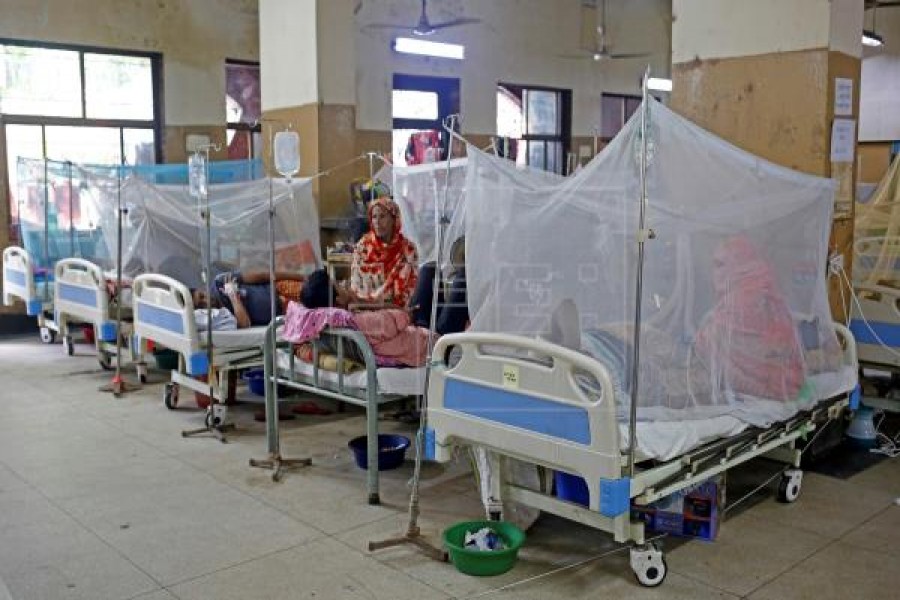Mirpur, followed by Uttara, has topped the list of Dhaka areas with the largest number of patients suffering from dengue, an aedes mosquito-borne disease.
Other areas of Dhaka with a large number of dengue patients going to hospitals are Mugda, Keraniganj and Jatrabari. Outside Dhaka, the disease has also spread in Cox’s Bazar.
At least 1,368 dengue patients were found in Cox’s Bazar, Dr Ahmedul Kabir, additional director general of the Directorate General of Health Services (DGHS), said at a media briefing on Thursday, reports bdnews24.com.
The number of deaths caused by dengue was highest in the Dhaka North City Corporation area this year. At least 18 dengue patients from the DNCC area died, while nine died in the DSCC area.
Dengue patients from outside Dhaka, however, died in larger numbers. At least 48 of 75 dengue patients who died this year were from outside Dhaka.
“We can see no downtrend and the number of patients is increasing by the day. We’re putting effort to increasing the workforce and logistics to combat dengue. We’re preparing to accommodate patients as we never know how many dengue patients will come to the government hospitals. We’re trying to ensure that no patient returns home without receiving treatment,” Kabir said.
DGHS data showed that people in their 20s contracted dengue more frequently than others but the death toll is much higher for older patients. At least a third of the patients who died from dengue were in their 40s. Women were more prone to death due to dengue infection than men. Most of the dengue patients who died did so within three days after hospitalisation.
“What we've sees this year is that a dengue patient goes under shock after coming to the hospital. Dengue has prevailed for a long time in Bangladesh and each and everyone has suffered from one of its strains. When a patient is infected for the second time, they go under shock. The crucial time is when the fever subsides. They should be properly hydrated time.”
Dengue has four strains and this year at least three strains are active in Bangladesh, said Tahmina Shirin, director of the Institute of Epidemiology, Disease Control and Research. “As multiple strains are active this year, they pushed up the death toll somewhat,” she said.
The government is prepared to combat the dengue crisis, said Kabir. Currently, government hospitals are managing the dengue patients well but they have been instructed to gear up in case the patient flow increases, he said.
“We told them this can’t be routine work as the patient flow may increase at anytime. They need to prepare with a skilled workforce, necessary medicines, fluids and platelets.”
The DGHS director also said the authorities will meet the private hospital authorities and ensure they admit patients following the proper system and do not harass the patients.
bdnews24.com asked Dr Kabir whether there was a ‘gap’ in dengue control and if the DGHS could identify the gap.
“There’s a gap between the government bodies and the awareness in the common households. Everyone needs to become aware. We’ll be able to bring down the damage caused by dengue if we can destroy the mosquito breeding grounds,” he said.


